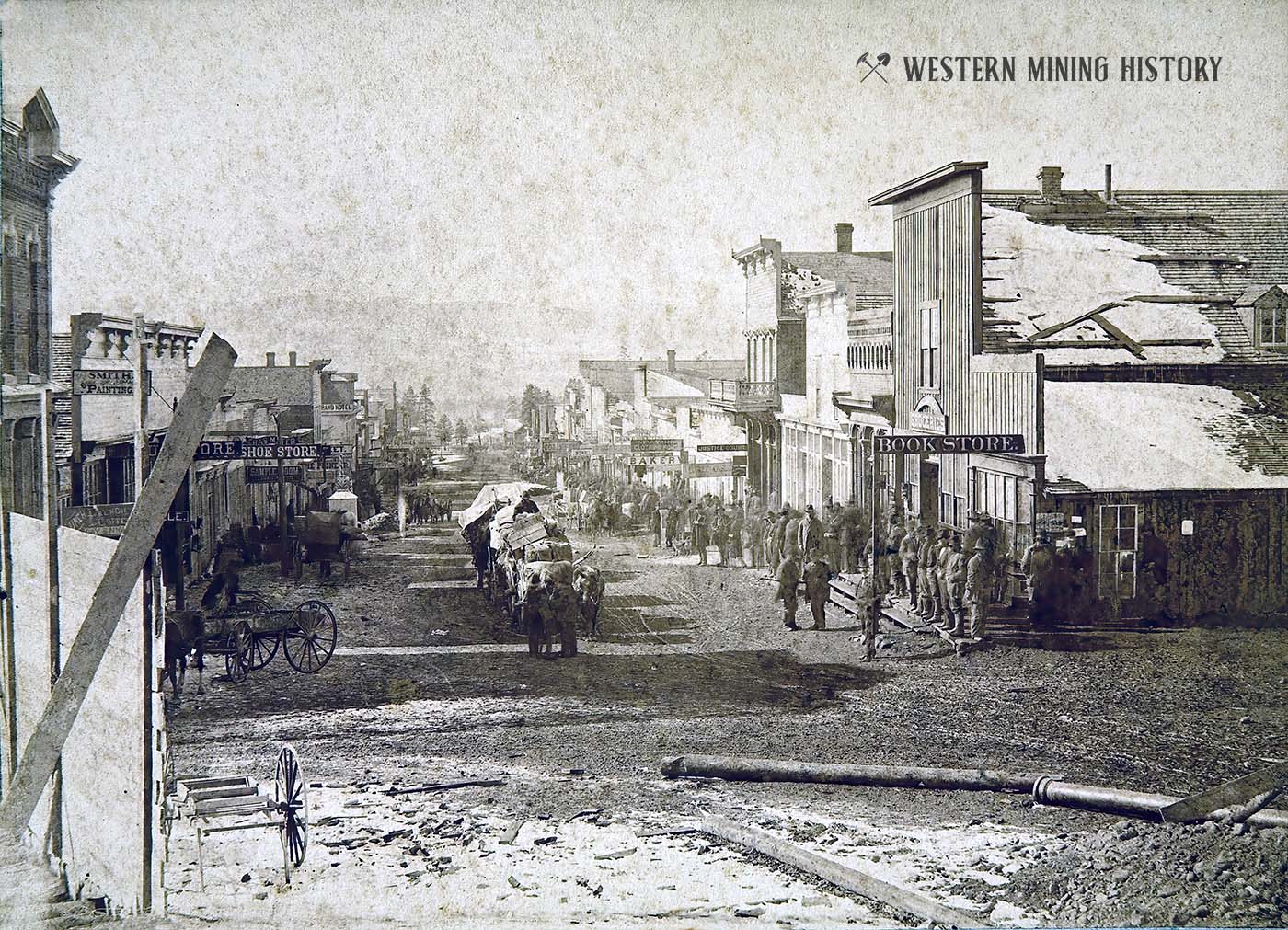Leadville History
Leadville was one of the world's greatest silver mining cities, but the district started out as a gold placer mining settlement. The district would languish for many years before miners would realize they were sitting on a mountain of silver.
Gold Discovery and Early Settlements
Abe Lee and others discovered gold at California Gulch in the upper Arkansas River Valley in 1860. A settlement called Oro City was established as thousands of miner's arrived to work the area. The placer deposits were rich, and millions of dollars in gold was mined in the first five years. However, by 1865 the gold was running out, and most of the miners moved on to new strikes.
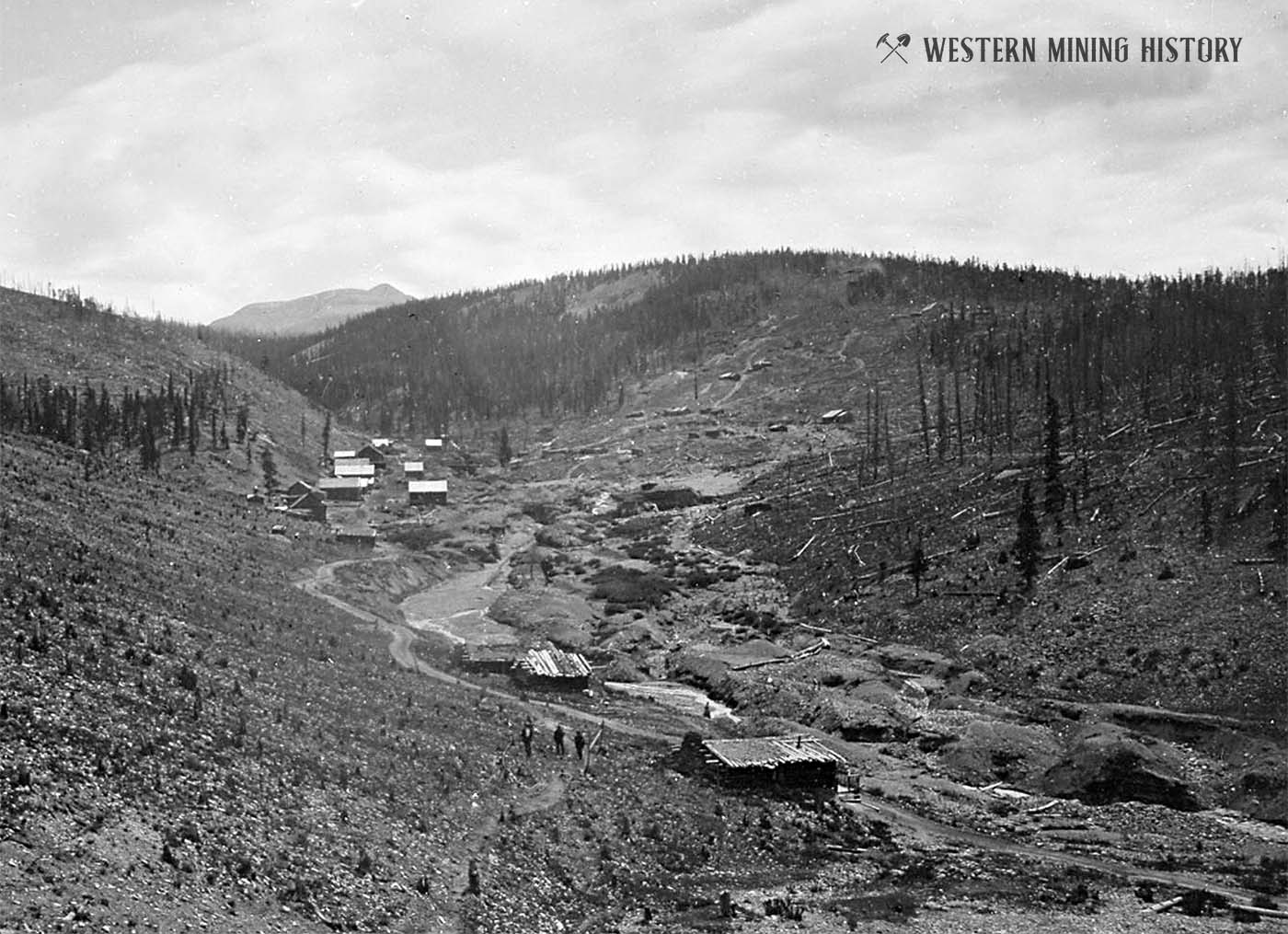
In 1868 there was renewed activity in California Gulch as the first attempts were made at lode mining in the district. The Printer Boy gold mine was the site of the areas first stamp mill. This and other mines gave Oro City a new lease on life, but difficulties with lack of supplies, poorly developed transportation routes, and water in the mines kept the mines, and the town, small.
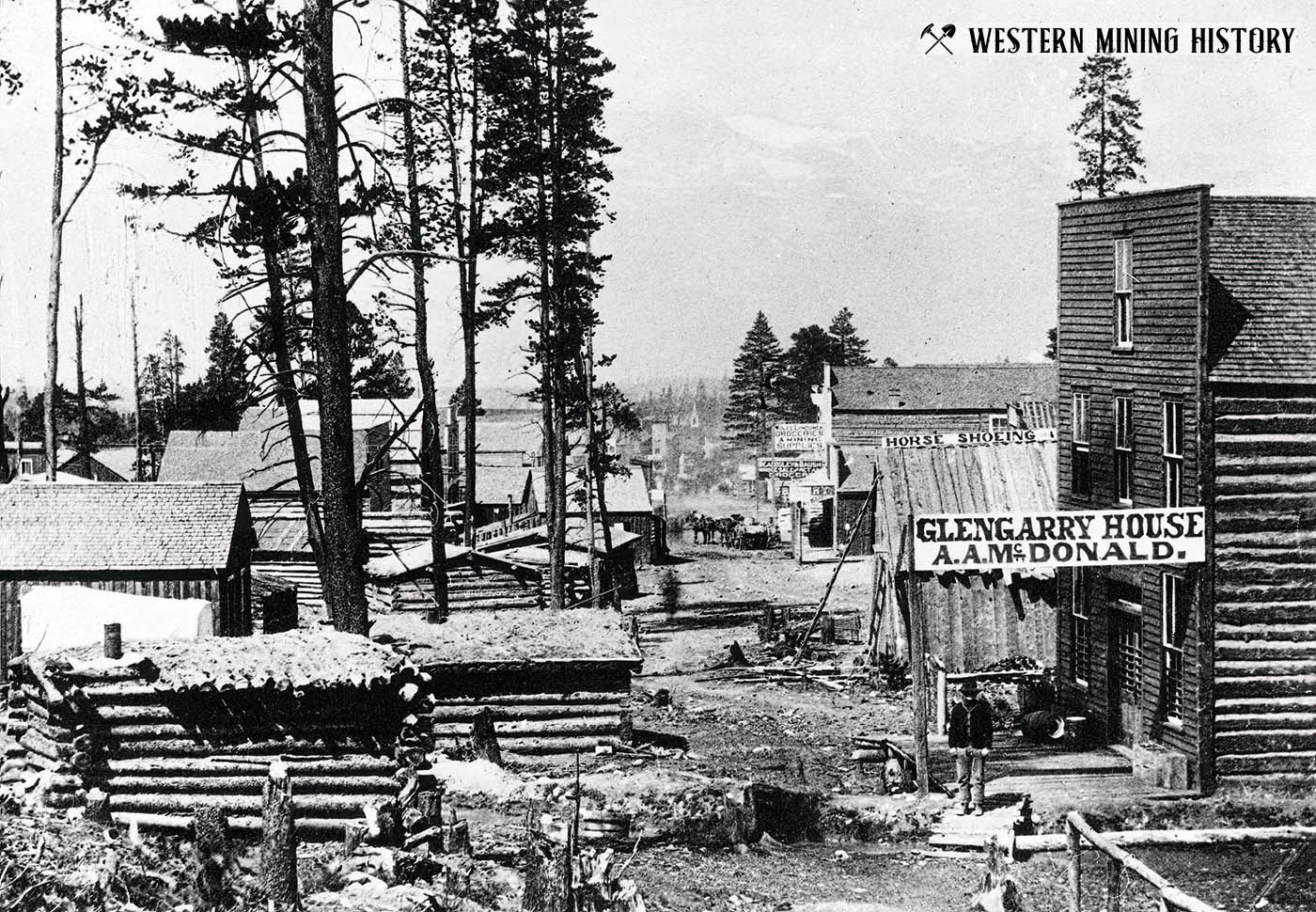
As mining activity spread through the upper Arkansas River Valley, Oro city split into Upper and Lower Oro as the population spread out to work the different areas. Another settlement emerged in 1873 or 1874 about half a mile below Lower Oro called Slabtown. It was Slabtown that would later become known as Leadville.
Related: The Mines and Minerals of Leadville gives a detailed description of Leadville's discovery and early years.
The area remained a small district into the 1870's. Completed in 1875, an eleven-mile long flume was built to supply water to new larger-scale placer operations in the valley. While successful, the venture was nevertheless plagued with the problem that most of the placer miner's in the area had experienced since the initial discovery of gold in the 1860's, the ubiquitous heavy black sand that was so difficult to separate from the placer gold.
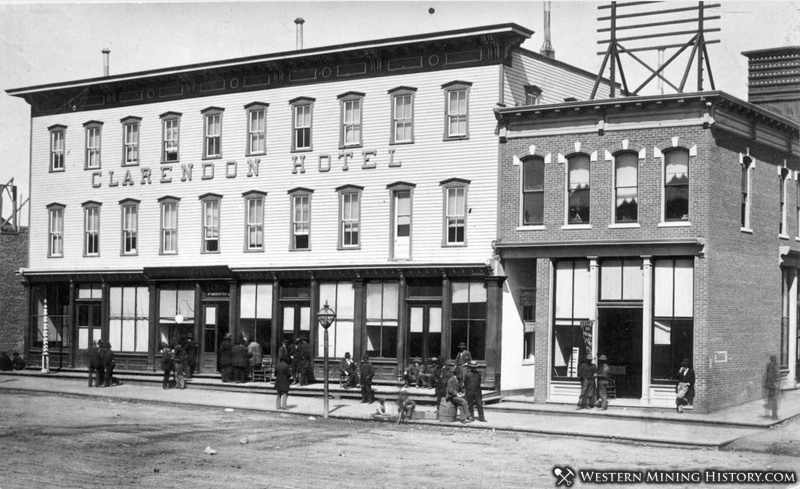
Attention Turns to Silver and Leadville is Founded
While some had suspected the presence of silver for several years, it wasn't until 1875 that a few enterprising miners shifted their attention from gold to the potential for silver in the valley. The black sands were sent for assay and were discovered to be carbonate of lead with high silver content. Outcrops were sampled, claims were staked, and initial attempts at silver mining started in 1876.
By 1877 the silver discoveries were finally catching the attention of miners and businessmen throughout the state and an influx of people began. New businesses were built in the area formerly known as Slabtown. Construction was started on the first true roads into the Upper Arkansas Valley. A meeting was held by residents of the growing community and the name Leadville was chosen as the official name of the settlement that was forming in the center of the new silver district.
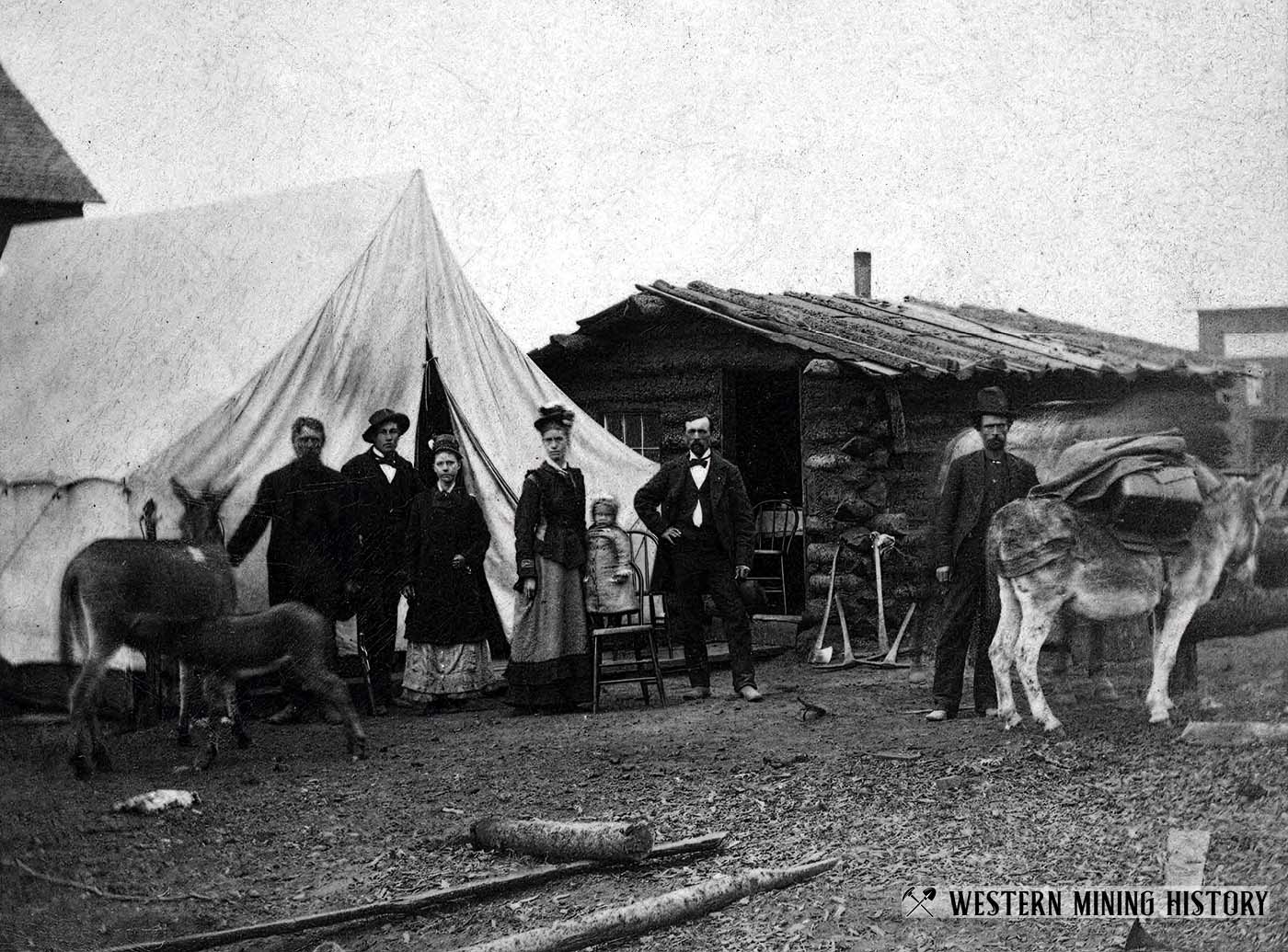
In February of 1878, an election was held and Horace Austin Warner Tabor (often referred to as H. A. W. Tabor) became the first mayor of Leadville. H. A. W. Tabor was a local store keeper that had been one of the original pioneers of the area in 1860. He left the area in the early 1860's as placer mining declined but returned in 1868. Tabor was known as a generous man and was well-liked by the camp. Tabor's generosity and prominent position in Leadville would ultimately make him a rich and powerful man.
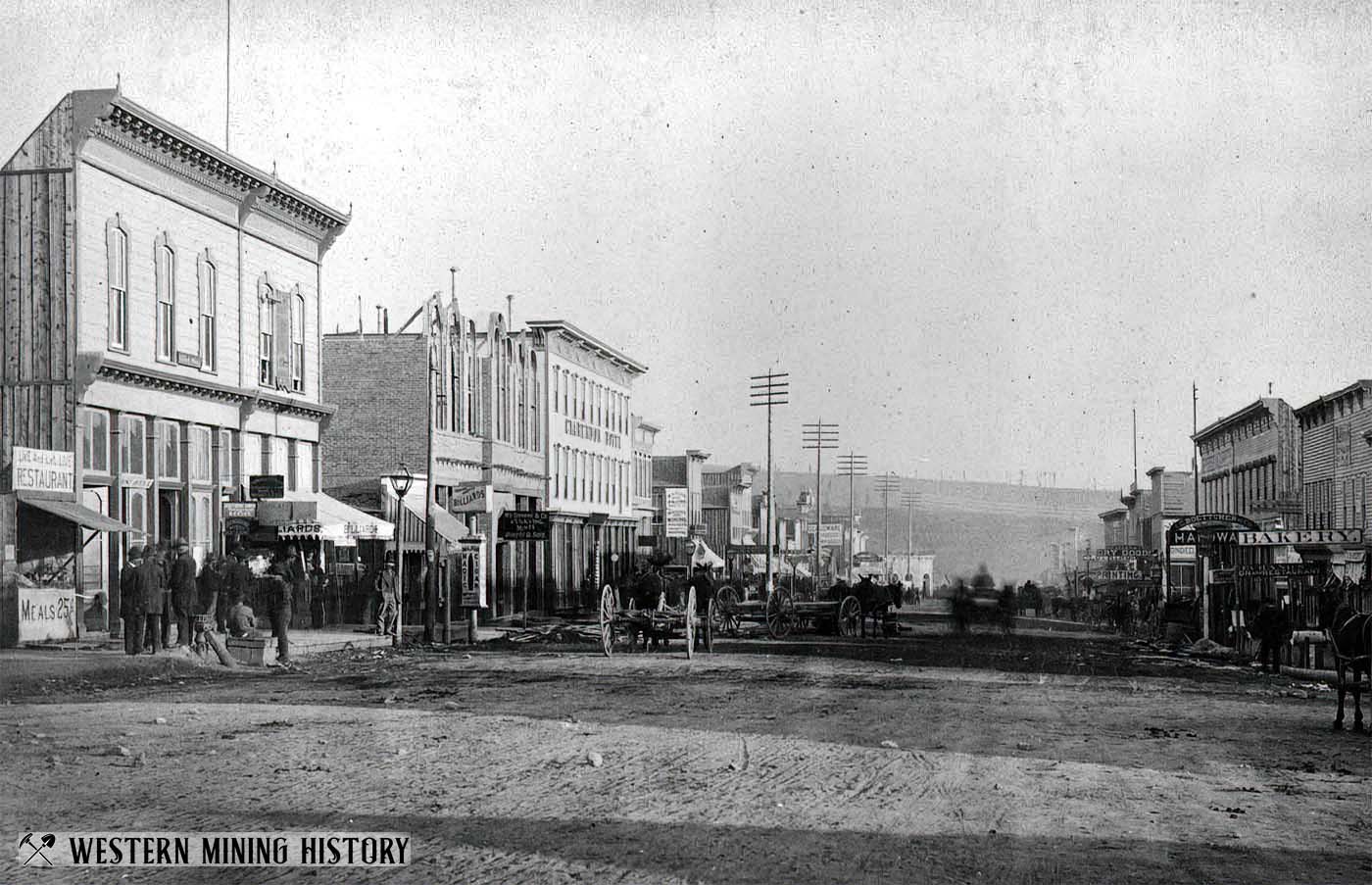
H. A. W. Tabor and The Bonanza at Fryer Hill
In 1878 George H. Fryer was prospecting north of where the main part of the silver activity currently was, in an area then considered worthless ground. Fryer quickly made a significant discovery, and "Fryer's Hill" would become one of the richest hills in the world.
Fryer sold his stake for $50,000, a substantial sum at the time. He was said to make several fortunes after that after investing his earnings in other mines in the area. Fryer died in Denver in 1884 of a drug overdose. This seems to have been the fate of many men that made their fortunes in the mines. Most were simple prospectors and once great sums of money were dropped in their laps, they took up lavish and unhealthy lifestyles that were ultimately their undoing. Not even a seemingly great businessman like H. A. W. Tabor would escape these tragic circumstances.
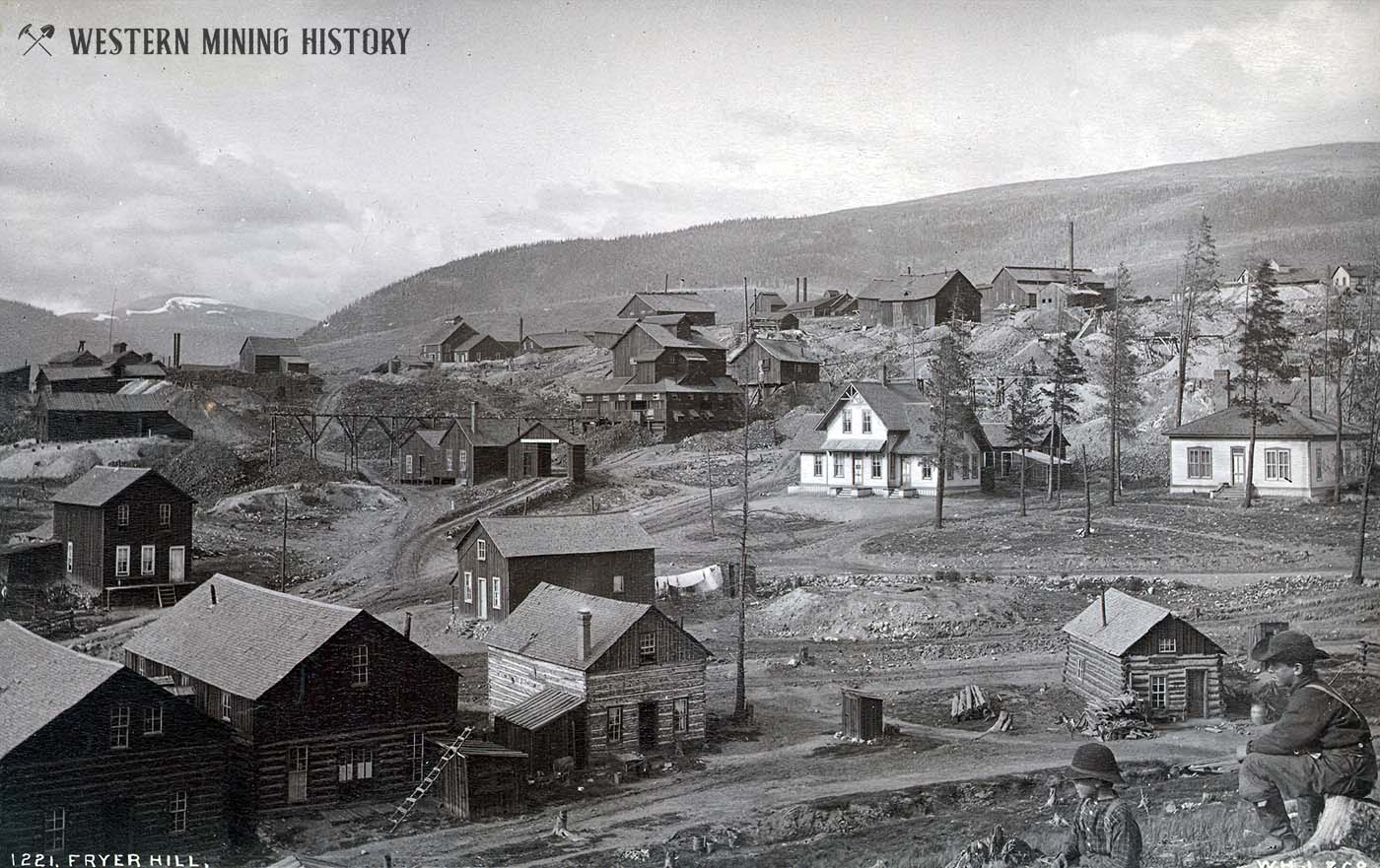
Horace Tabor made a habit of grubstaking prospectors that were newly arrived in Leadville (grubstaking was the practice of supplying prospectors with tools and supplies in exchange for a percentage of any discoveries they make). He was known to be exceedingly generous with his stakes, supplying almost anyone who was in need and often resupplying them on several occasions as they continued their search for riches.
It was on Fryer Hill that two young German immigrants that Tabor had grubstaked made a fabulous strike. That discovery would be known as the Little Pittsburg mine, and almost two million dollars in silver would be taken from the mine in just two years. Tabor's one-third interest in the Little Pittsburg would make him a rich man. He invested his returns in additional claims which often proved just as rich. Tabor would ultimately become the leading tycoon of the district and a prominent figure in both Leadville and all of Colorado, an interesting outcome for a man that started out as a shop keeper.
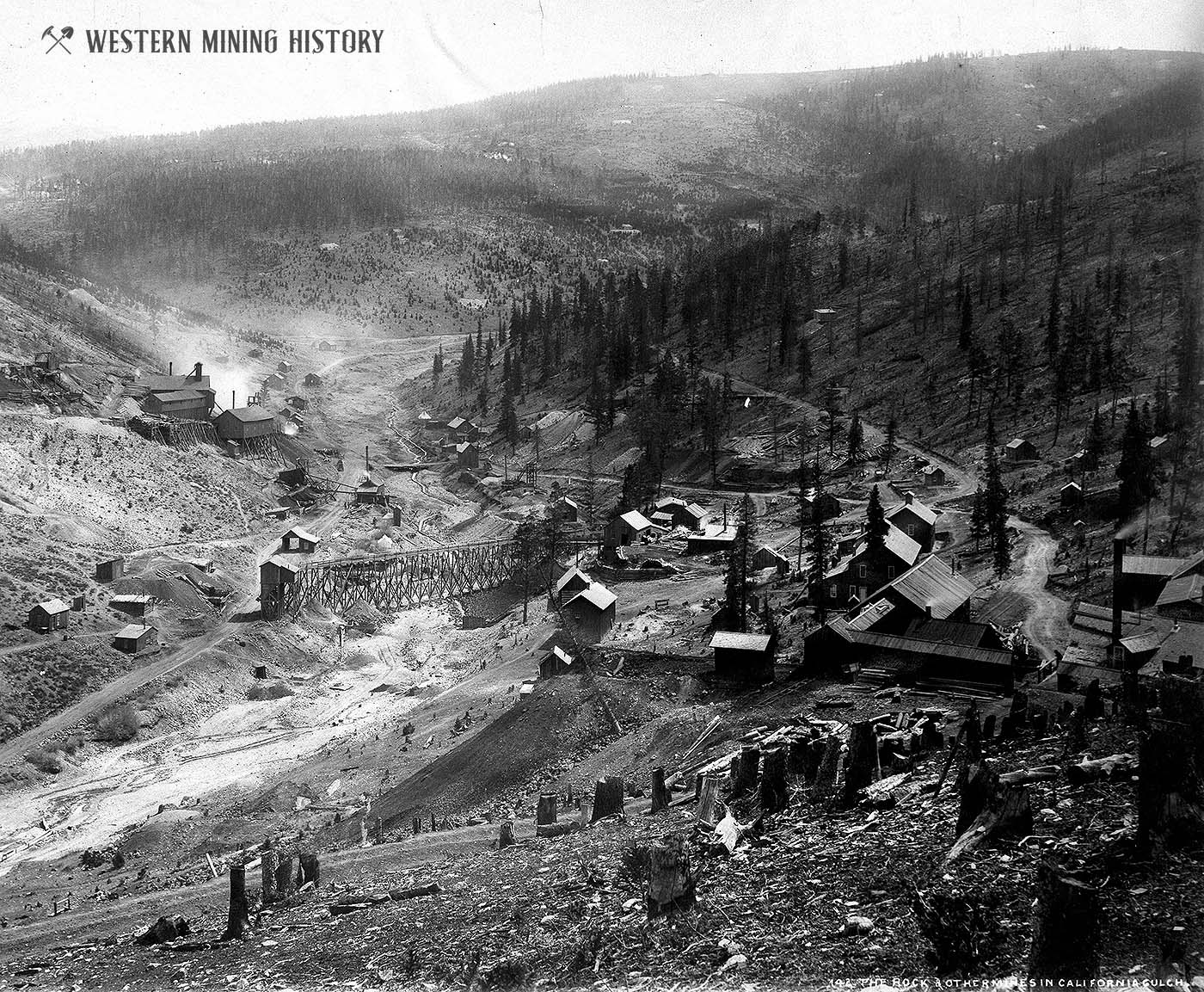
The Great Leadville Boom
As word spread of the great wealth being generated by the Leadville mines, the boom became a frenzy and thousands of people were arriving every month in 1879. Newcomers describe the crowds in the streets as being so dense that travel through the town was almost impossible.
Leadville would become one of the world's largest (and most notorious) mining cities. The railroad reached Leadville in 1880, further accelerating growth of the town. At its peak in 1882, Leadville is estimated to have over 50,000 residents.
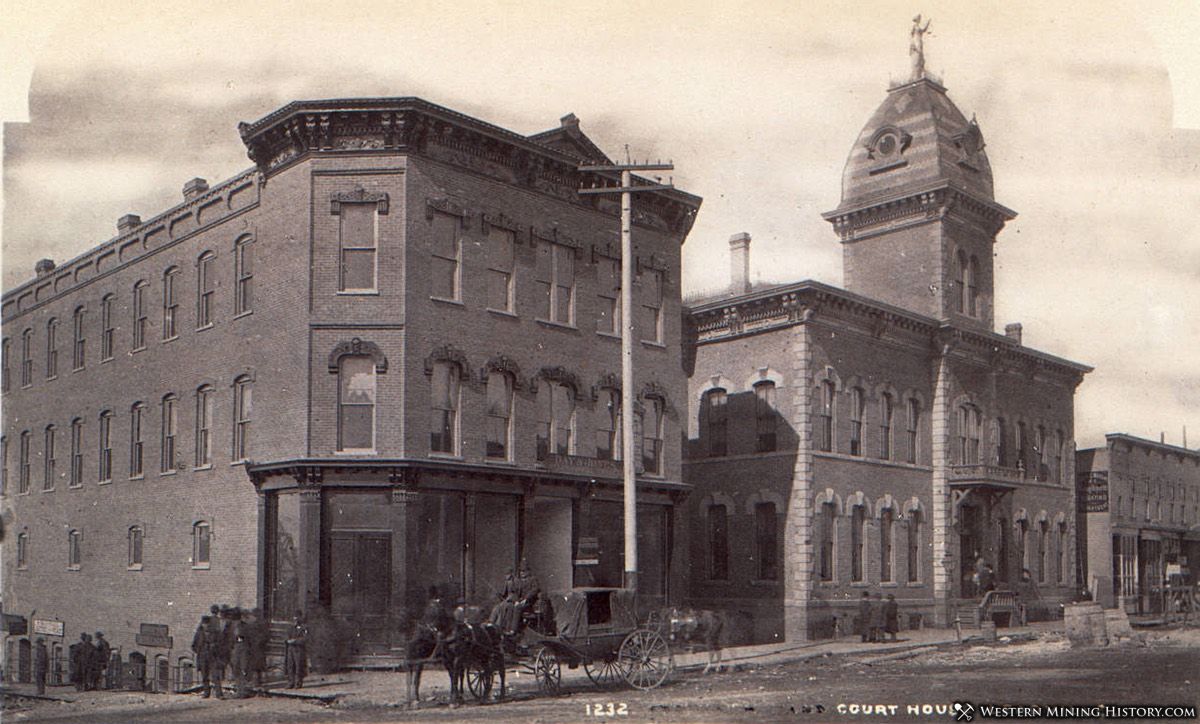
Leadville became home to many skilled professionals. A quote from the book "Leadville: Colorado's Magic City" by Edward Blair humorously sums up the situation: "Over 120 lawyers made Leadville their home, while almost half that number of doctors attempted to correct, medically, the effects of alcohol, altitude, cold, and 120 lawyers."
In the 1880s, Leadville was transformed into a modern city and a major industrial center. Over one hundred miles of railroad tracks were laid to link the hundreds of mines in the district. Massive smelters were built to treat the seemingly endless supply of silver ore being taken from the mines. Power plants were built to supply electricity to electric lights in the city. In 1886 a sewer system was built (it is difficult to imagine what the previous years must have been like with tens of thousands of residents and no sewer).
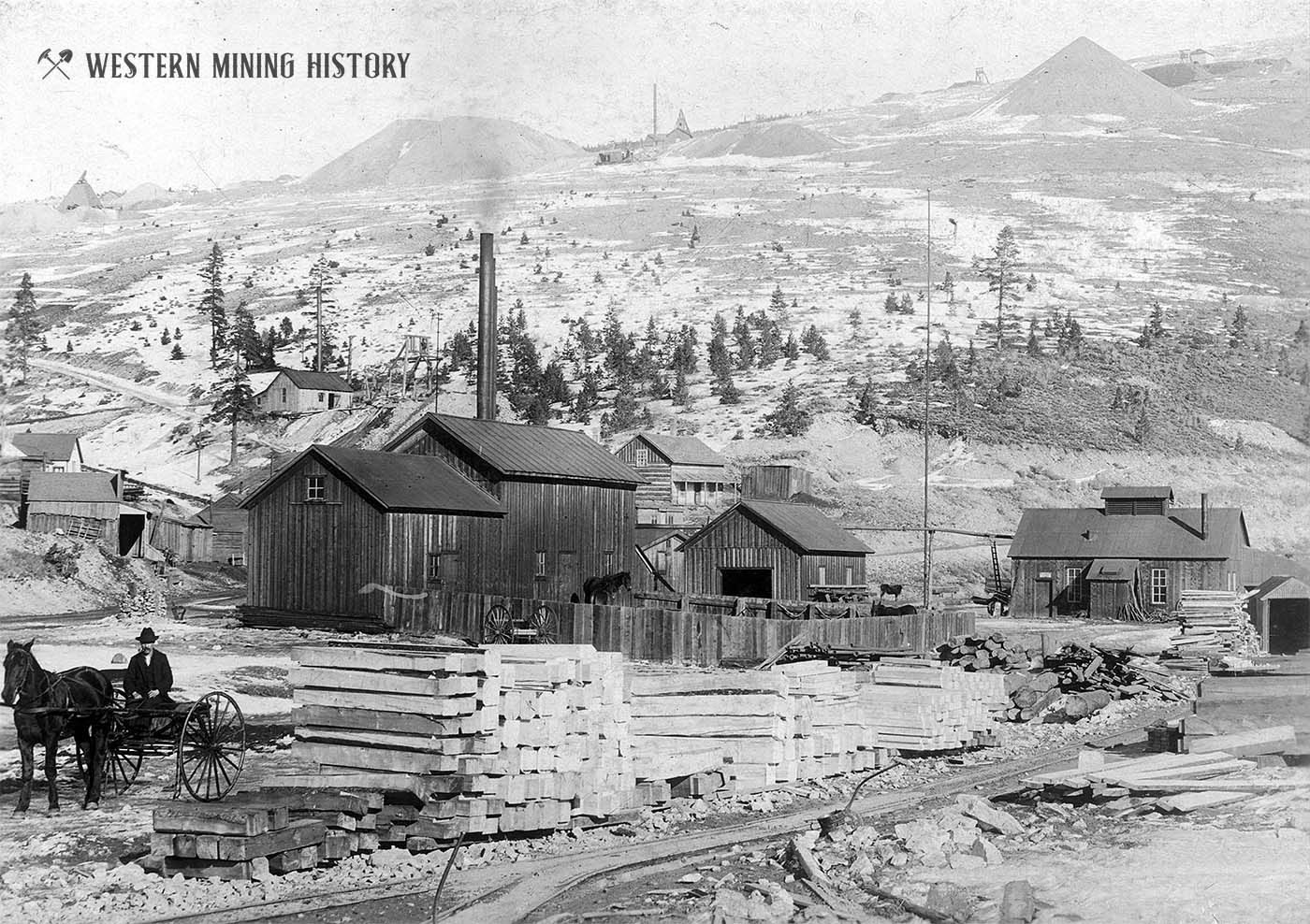
The great wealth and nonstop activity in Leadville attracted many colorful characters and notorious outlaws. Some of the famous people known to have visited or lived in Leadville in some point are: Doc Holliday, Wyatt Earp, Bat Masterson, Soapy Smith, Frank and Jesse James, The Dalton Gang, Poker Alice, Texas Jack, Unsinkable Molly Brown, Oscar Wilde, former President Ulysses S. Grant, and President Benjamin Harrison.
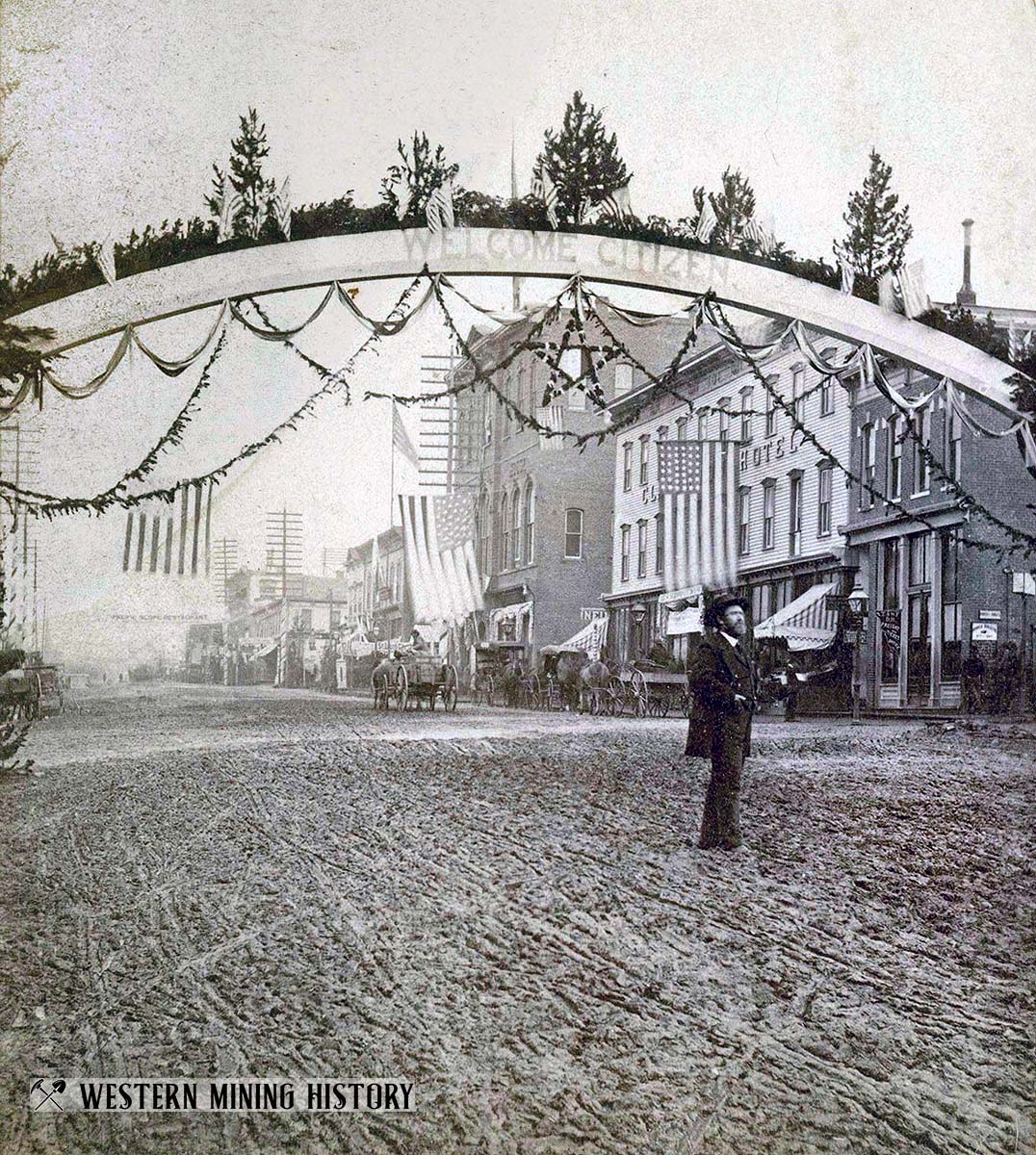
The Silver Crash of 1893
Leadville's boom years ended with the silver crash of 1893. The drop in silver prices resulted in most mines of the district being idled, and ninety percent of Leadville's workforce became unemployed.
Remarkably, Leadville rebounded rather quickly from the crash of 1893. Once the initial shock was over, miners agreed to a lower wage and many of the mines reopened. New discoveries of gold diversified the Leadville mines and softened the blow of the silver collapse. One famous mine, the Little Jonny, struck vast quantities of rich gold ore in 1893 and became one of the district's most famous mines. By 1895 Leadville's mines were once again operating at full production.
1895 saw Leadville mines produce the most silver of any year of its history except for 1880 - almost 9.5 million ounces. This astonishing result just two years after the economic crisis that destroyed so many other districts was cause for celebration, and Leadville approached a celebration like it approached most things, in grand style.
During the winter of 1895-96 Leadville built its grand Ice Palace, the largest such structure ever built. The palace ended up being a failure economically as it did not produce as much tourist dollars as anticipated, but it was still looked at with pride by Leadville citizens for years and decades after it was gone.
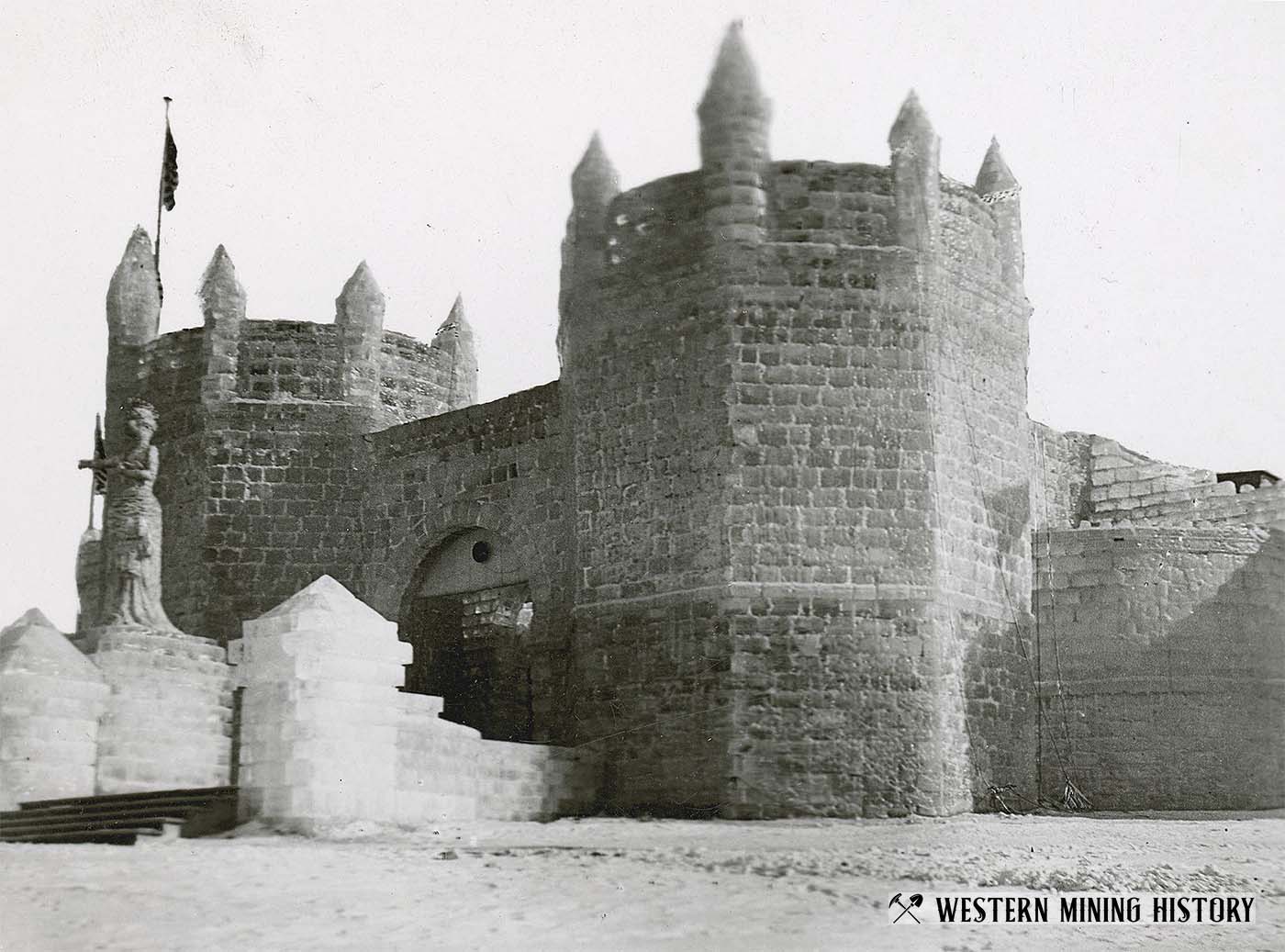
Related: The Leadville Ice Palace
Leadville Miner's Strike
Good times were back in Leadville, but the miner's wages, which were reduced to $2.50 a day in response to the silver crash, rebounded for some, but not for all of the miners in the district. Many of the miners organized under the Cloud City Miners' Union (CCMU), Local 33 of the Western Federation of Miners, and declared a strike in May, 1896 that shut down many of the area's mines.
Mine owners organized and collectively resisted the miner's demands. They signed a secret agreement to maintain a unified front against the union and the striking miners. The owners then retaliated by shutting down all the mines in the district, putting thousands out of work.
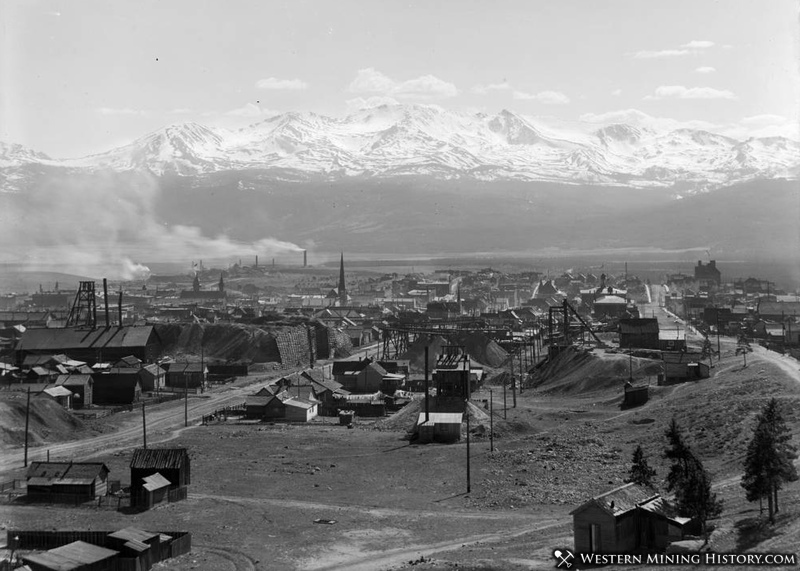
In September of 1896, around 50 striking miners attacked the Coronado mine which was guarded by twenty armed men. In the ensuing battle, the attackers threw incendiary bombs at the mine structures resulting in the destruction of the shafthouse. They then shot and killed a fireman that was fighting the blaze. Two attackers were killed in the fight, and a third was seriously wounded.
The attackers then advanced on the Emmett mine, attacking it with gunfire, dynamite, and even a home-made cannon. The attacking strikers were driven back and lost one of their numbers to gunfire. Two other mines were attacked that night.
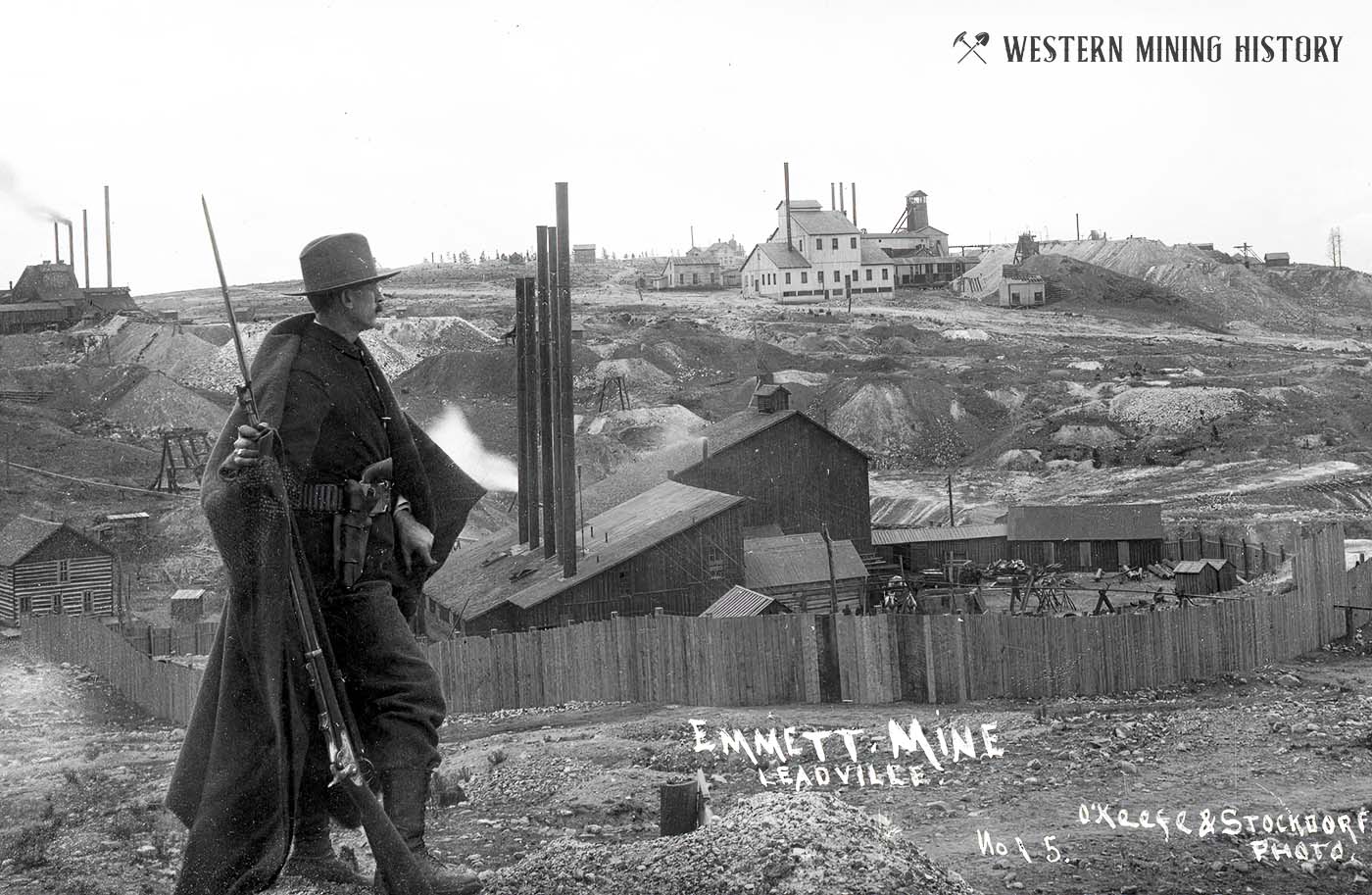
In response to the attacks, the Colorado National Guard was deployed in Leadville to protect the property of the mine owners. Over 650 soldiers were deployed and stationed among the mines.
The strike dragged on into 1897 and the union was running out of money. The union finally accepted defeat, and the miners went back to work in March of 1897 at the original wage scale. Nothing had been gained by the miners in this nearly year-long ordeal.
The Bonanza King of Leadville
The story of H. A. W. Tabor certainly does not end with the riches he made with his Fryer Hill mines. Tabor made millions from the Leadville mines and became one of Colorado's richest and most famous citizens.
Tabor built many landmark buildings in Leadville, including the Tabor Opera House and the Tabor Grand Hotel, both of which still stand today. He also built buildings in Denver like the magnificent Tabor Grand Opera house, which sadly was demolished in 1964.
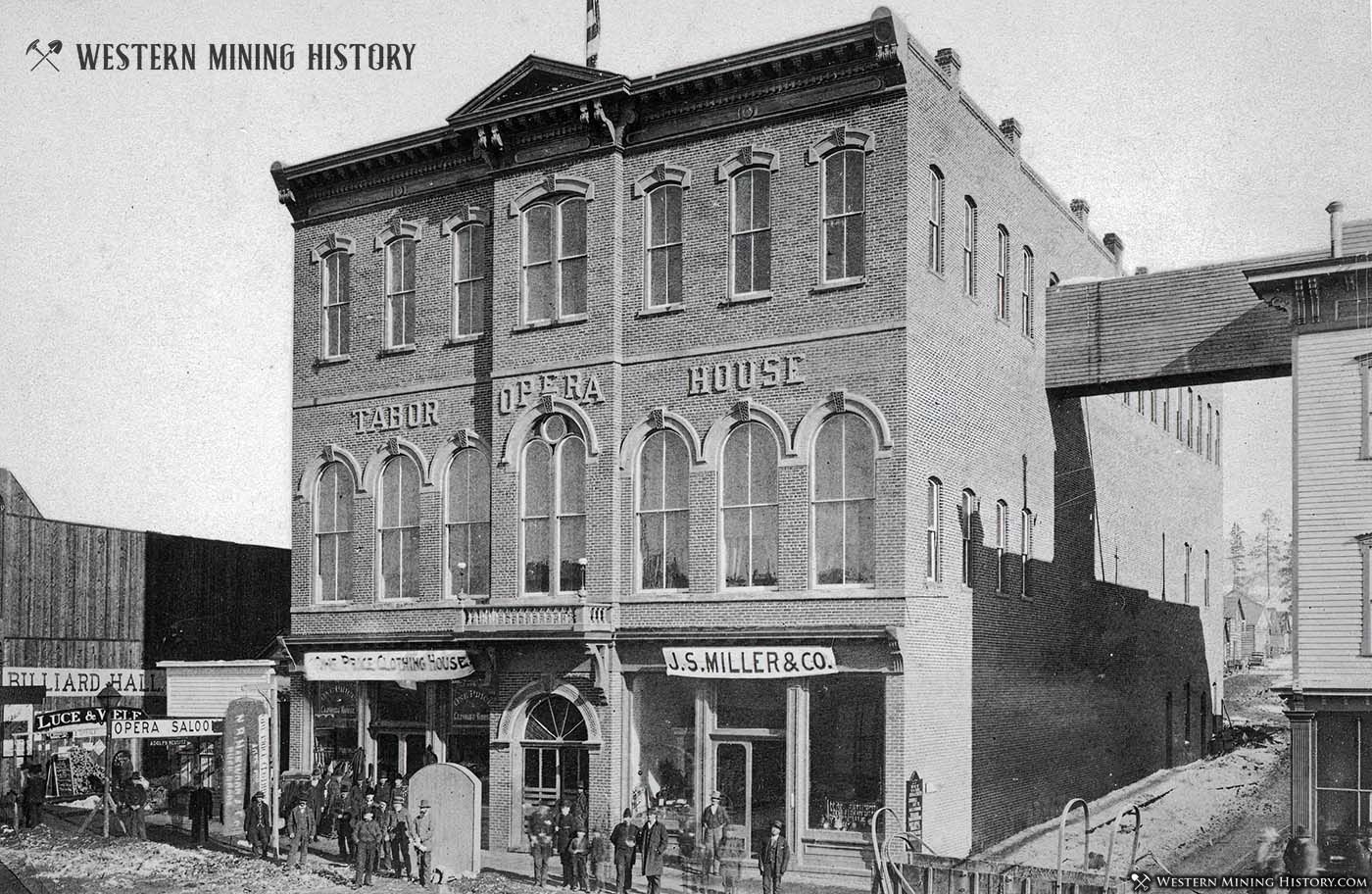
Tabor, a married man, had an extended affair with a young woman named Baby Doe. He divorced his current wife Augusta, and married Baby Doe in March of 1883. The entire affair was considered scandalous and the Tabor's were largely excluded from Denver's social scene.
Riding the wave of his popularity in Leadville, Tabor was elected as Lieutenant Governor of Colorado in 1878, and served as interim U.S. senator in 1883-1884. Subsequent attempts to run for governor in the 1880s were unsuccessful, partly due to the sordid Baby Doe affair. The affair soured Tabor's status among Denver's elite, and support for reelection was scarce.
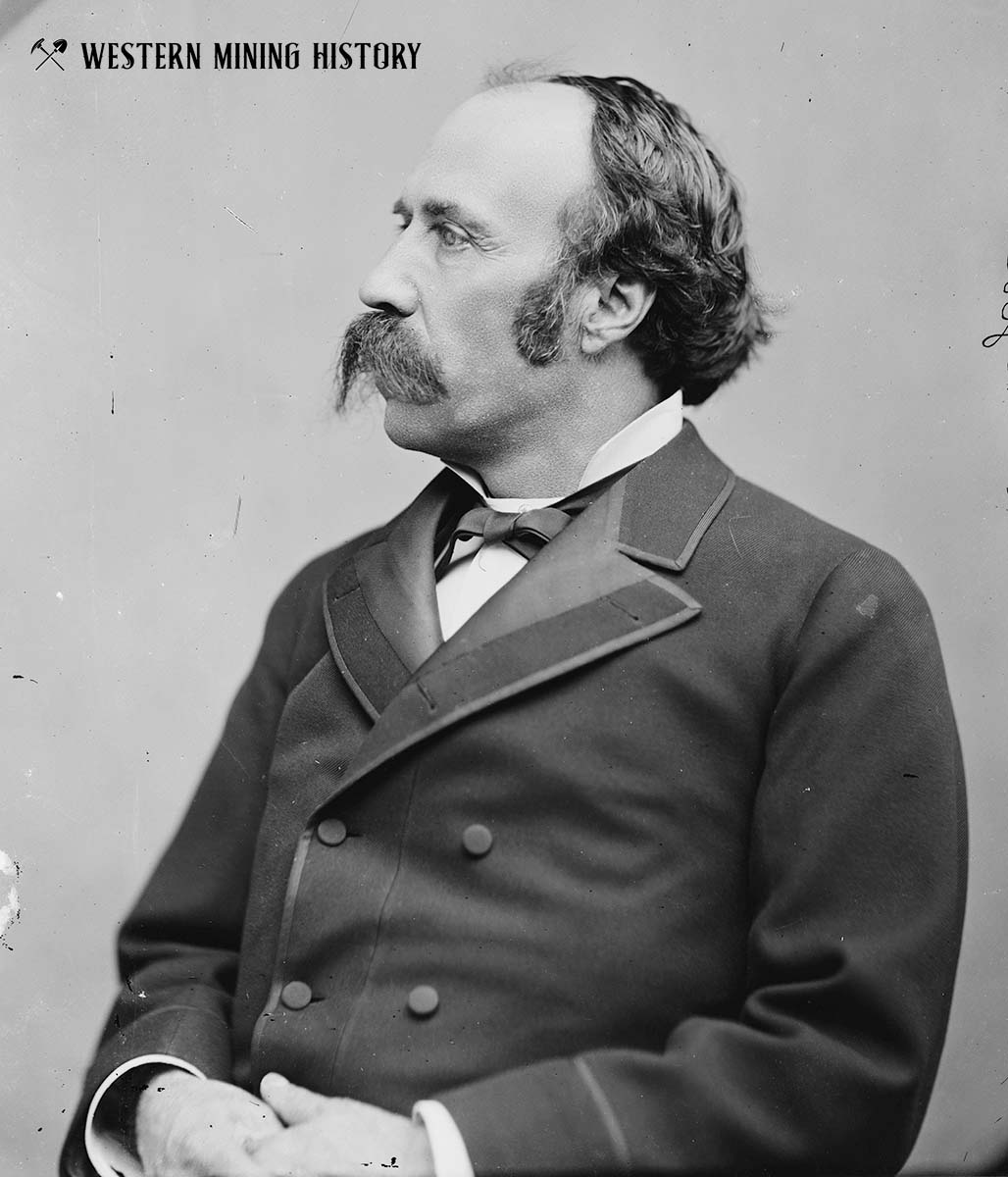
Tabor's generous nature was ultimately his downfall. In a fabulously rich boomtown it might seem acceptable, even shrewd, to grubstake every prospector that comes through the door, or to buy up every claim or mine that was offered. Ten or even a hundred bad investments could be paid for by just one rich strike, and Leadville had many rich strikes awaiting eager prospectors and their backers.
However, most of the real world is not a fabulously rich silver town where riches spring from the ground like geysers of pure silver. Tabor continued his risky investments all over the West and even in other parts of the world, often without ever seeing or knowing anything about what he was buying. He was known to purchase or back any mine, scheme or enterprise that crossed his desk.
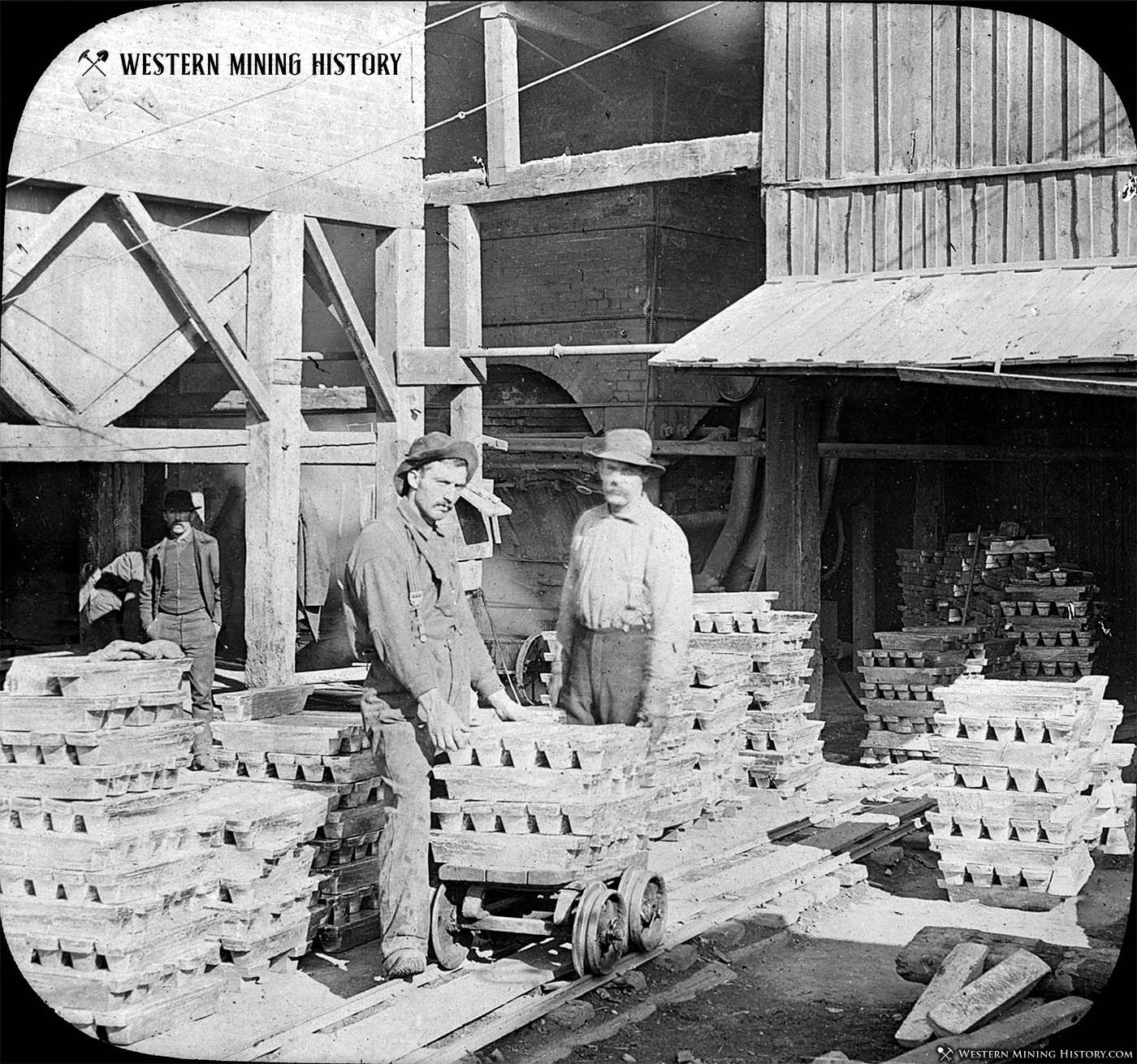
Ultimately reckless and high risk investments, combined with lavish spending, consumed most of Tabor's great fortune. The silver crash of 1893 wiped out most of what was left and Tabor was no longer a rich man. By 1898 he was penniless.
Still respected in Denver, Tabor was given the job of postmaster in January of 1898. Penniless, he died of appendicitis in 1899. Baby Doe moved back to Leadville to live on one of Tabor's last holdings, the Matchless Mine. She lived alone, in a cabin at the mine, for over 35 years. During the winter of 1935, Baby Doe was found frozen to death in her cabin.
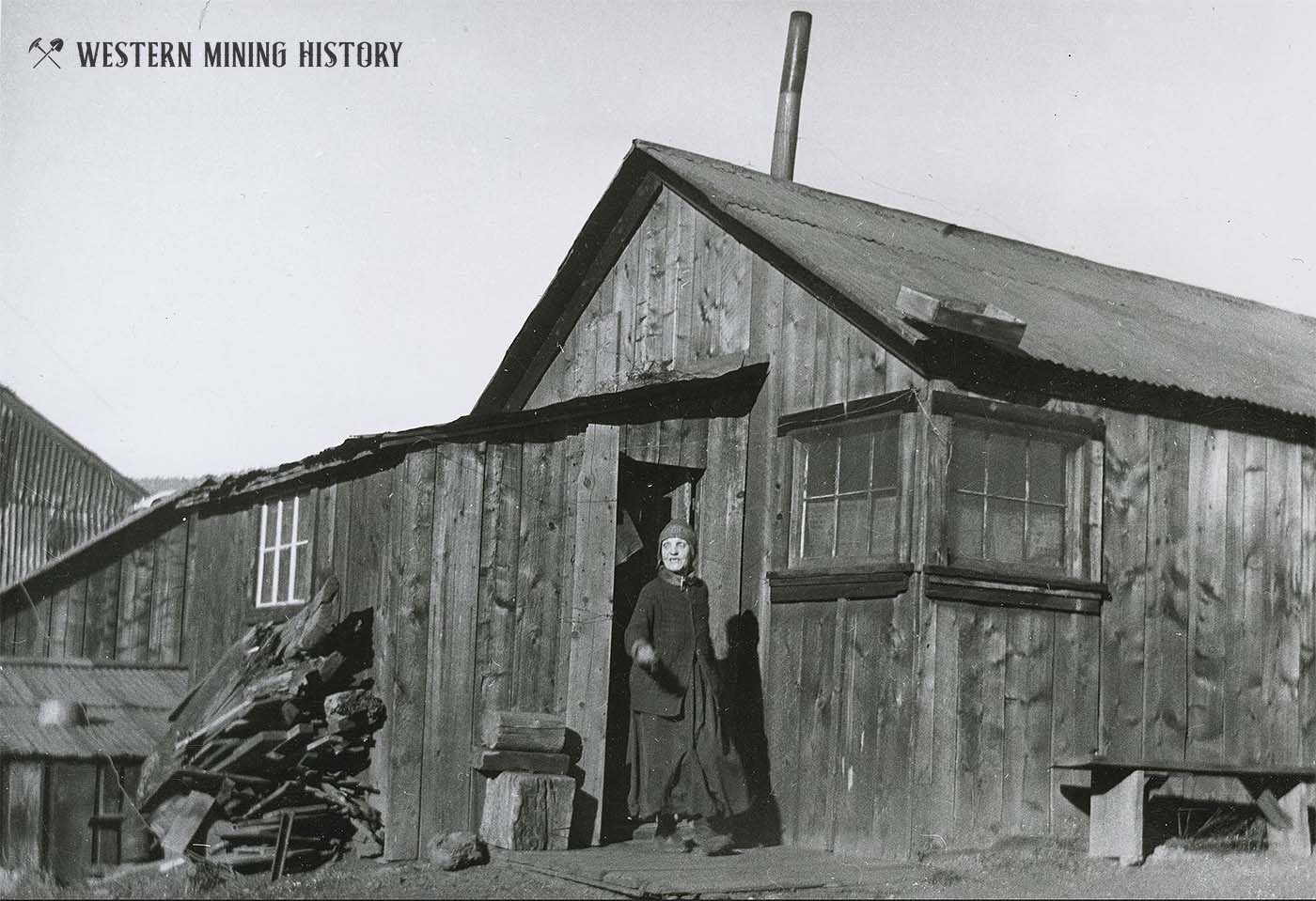
World Wars and a Depression
Leadville did not suffer a dramatic downturn like many western mining centers. Despite the fact that the gold and silver mines were in decline, the diversity of mines in the district kept the town going for decades, even if its glory days were long gone.
By 1900 Leadville had a fledgling zinc industry. As demand for zinc increased, the Leadville zinc mines expanded and in 1915 a zinc smelter was built. Molybdenum deposits were discovered on Bartlett Mountain north of Leadville. These deposits became the Climax molybdenum mine which was developed just as World War I started and demand for molybdenum skyrocketed.
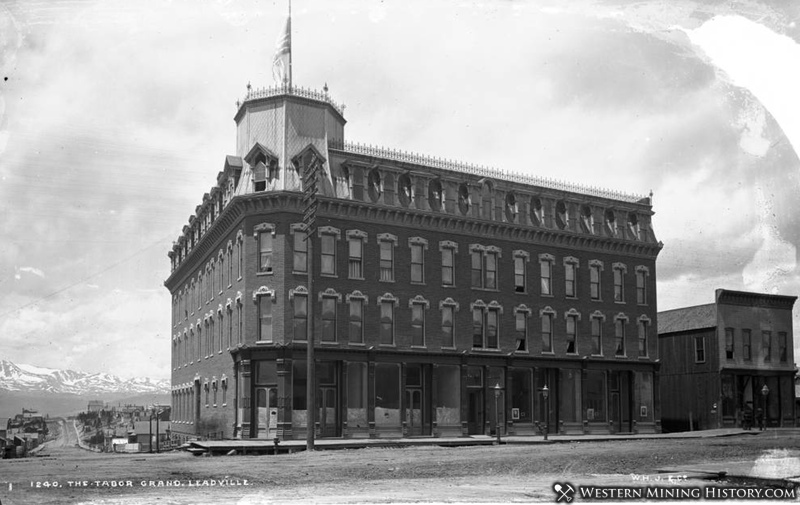
The end of World War I and the related decrease in demand for Leadville's mined products, combined with the onset of the Great Depression, left the district's mining industry in shambles. The period between 1920 and 1942 were extremely lean times. Many attempts were made at restarting old mines but most were unsuccessful given the extremely low price of metals.
With the New Deal economic stimulus project initiated in 1933, the price of gold was raised from $20 to $35. This resulted in some of the Leadville gold mines being reactivated, and development of new placer operations in California Gulch. In the years before World War II, the Climax molybdenum mine continued to grow, providing much-needed jobs to the area.
The onset of World War II brought a major development to the area. The United States Army announced plans to build a military camp near Leadville that would house 15,000 troops. Construction of Camp Hale resulted in hundreds of construction workers descending on the old mining city which greatly stimulated local businesses. Between the new military camp, and new demand for metals due to the war, Leadville emerged from the depression with excitement and optimism.
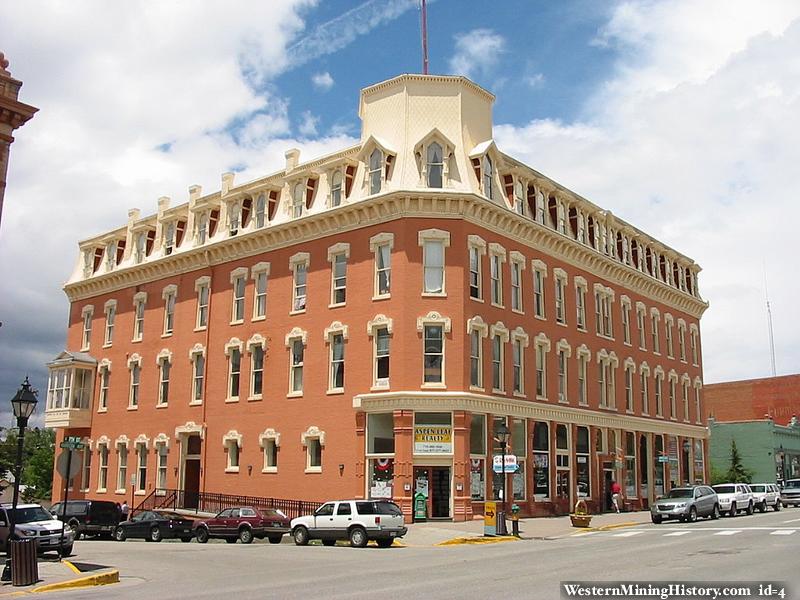
Leadville Today
Leadville emerged from World War II as an active mining town but the people citizens of the town started to realize that mining could not sustain them forever. Efforts were made to diversify the economy. Eventually, tourism and nearby ski resorts were able to give the famous camp a new lease on life.
Today, Leadville is a colorful and historic town high in the Colorado Rockies (at 10,200 feet, it is the nation's highest incorporated town). Many victorian buildings and homes have been preserved. The National Mining Hall of Fame and Museum is located in town. Leadville remains one of the West's most historic mining towns, and is still a vibrant and fascinating community.
The Mines and Minerals of Leadville
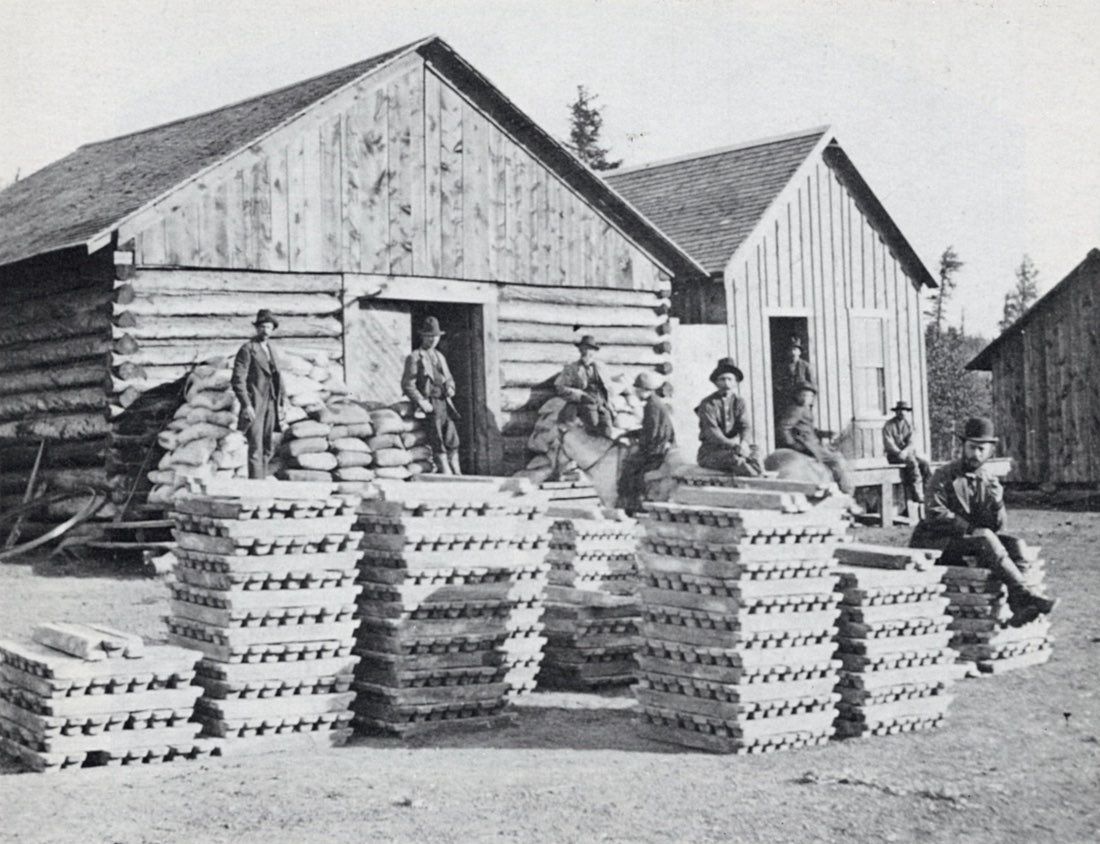
The Colorado Mining Directory of 1883 called Leadville the “natural successor to Australia and California.” In the century since that statement was made, interest has never waned and production has never entirely ceased. Not only valuable ore but also fine mineral specimens have been recovered and preserved from many of the nearly 2000 mines in the Leadville area. Continue Reading
The Leadville Ice Palace
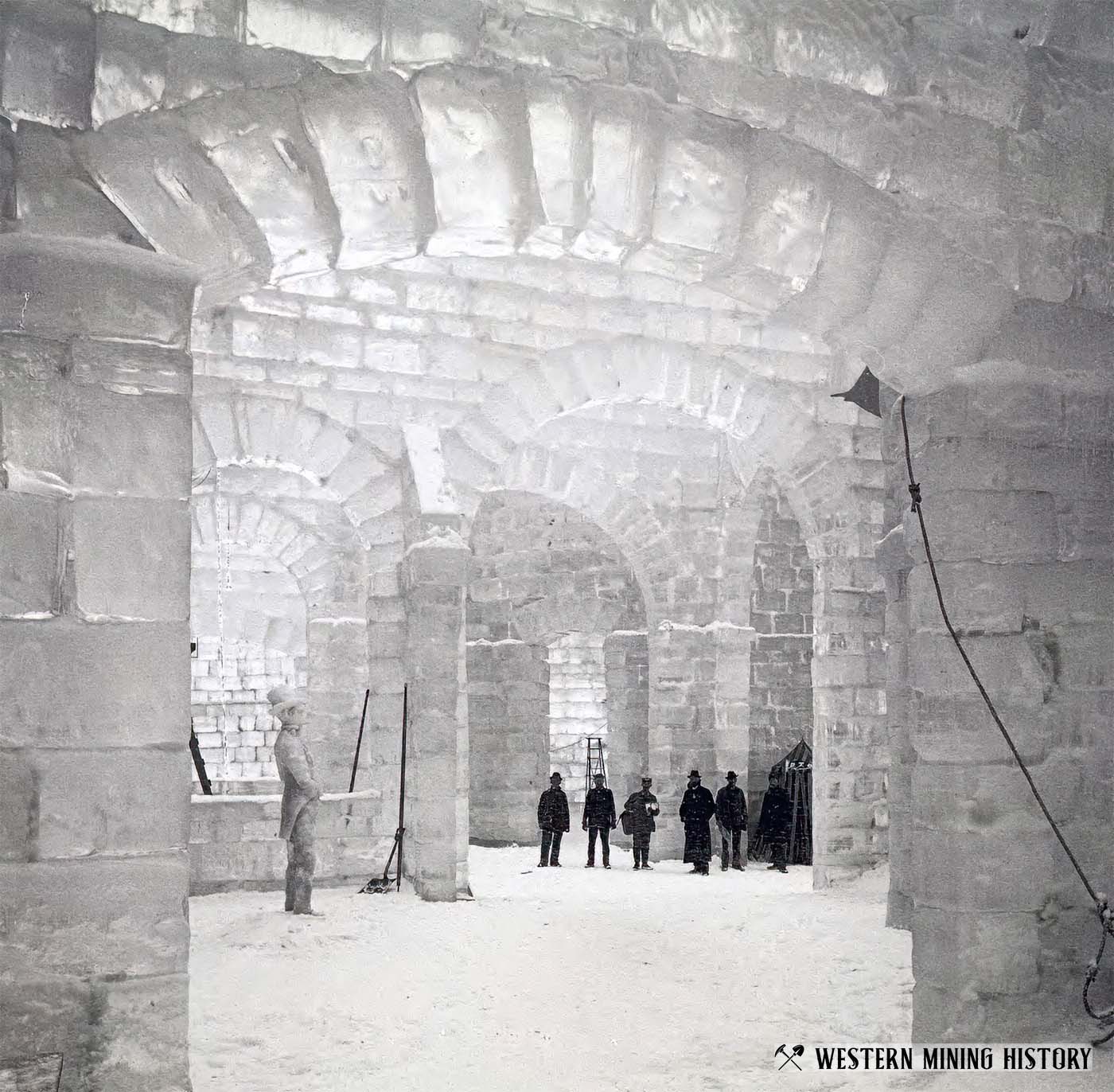
In the 1890s, Leadville, Colorado was experiencing an economic depression. To boost the local economy, and the mood of the citizenry, in 1895 a plan was conceived to have a winter carnival, with the main attraction being a grand palace constructed almost entirely of ice. Continue Reading
For Members: Alderman Joy of Leadville
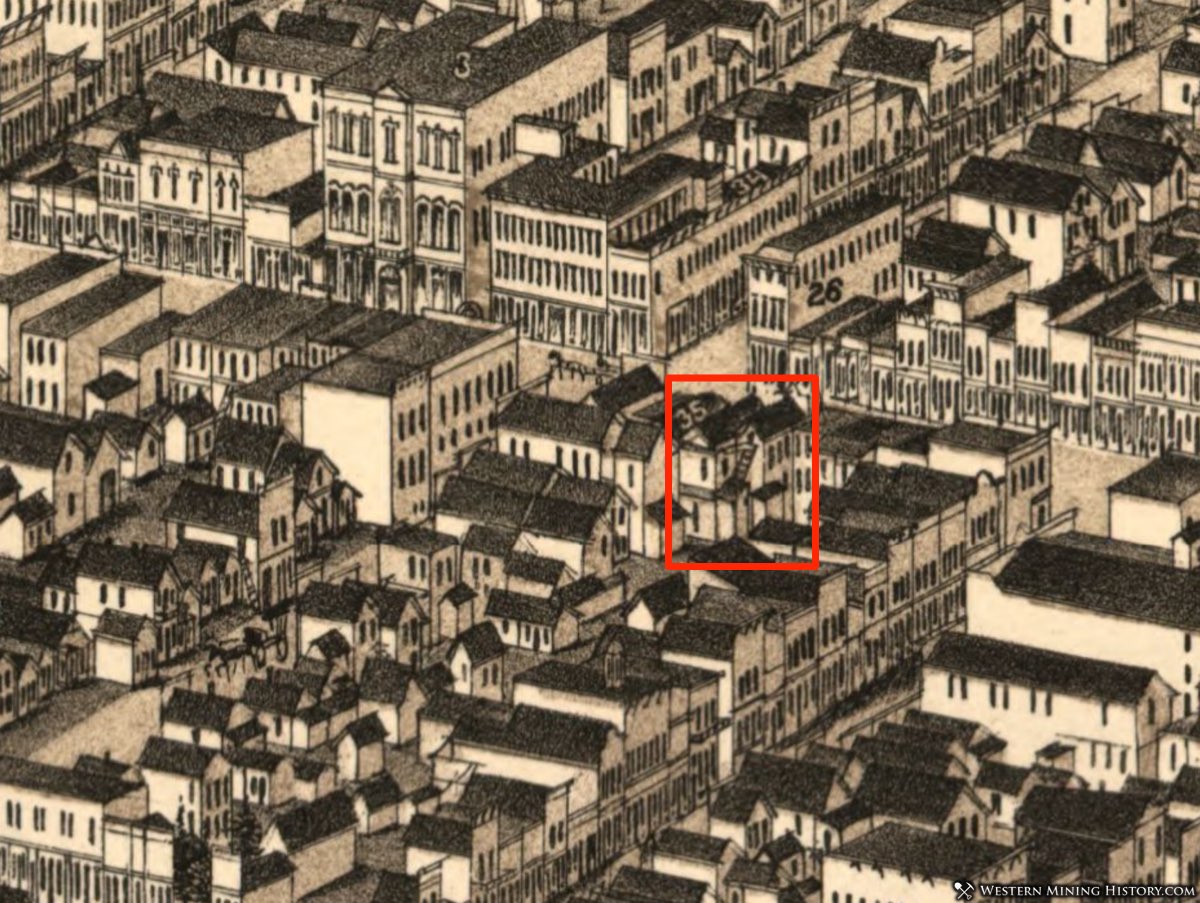
While looking for articles on Doc Holliday I stumbled on a story of a vicious attack on E. D. Cowen, a popular newspaper editor in Leadville. The perpetrator was a man known as Alderman Joy (Charles C. Joy), and the beating he gave Cowen in September 1882 left the man on the brink of death. This article uses historical newspaper articles to paint a picture of who Alderman Joy was - a violent man that was feared by many for nearly two decades.
Read the story of Alderman Joy
A Tour of Colorado Mining Towns
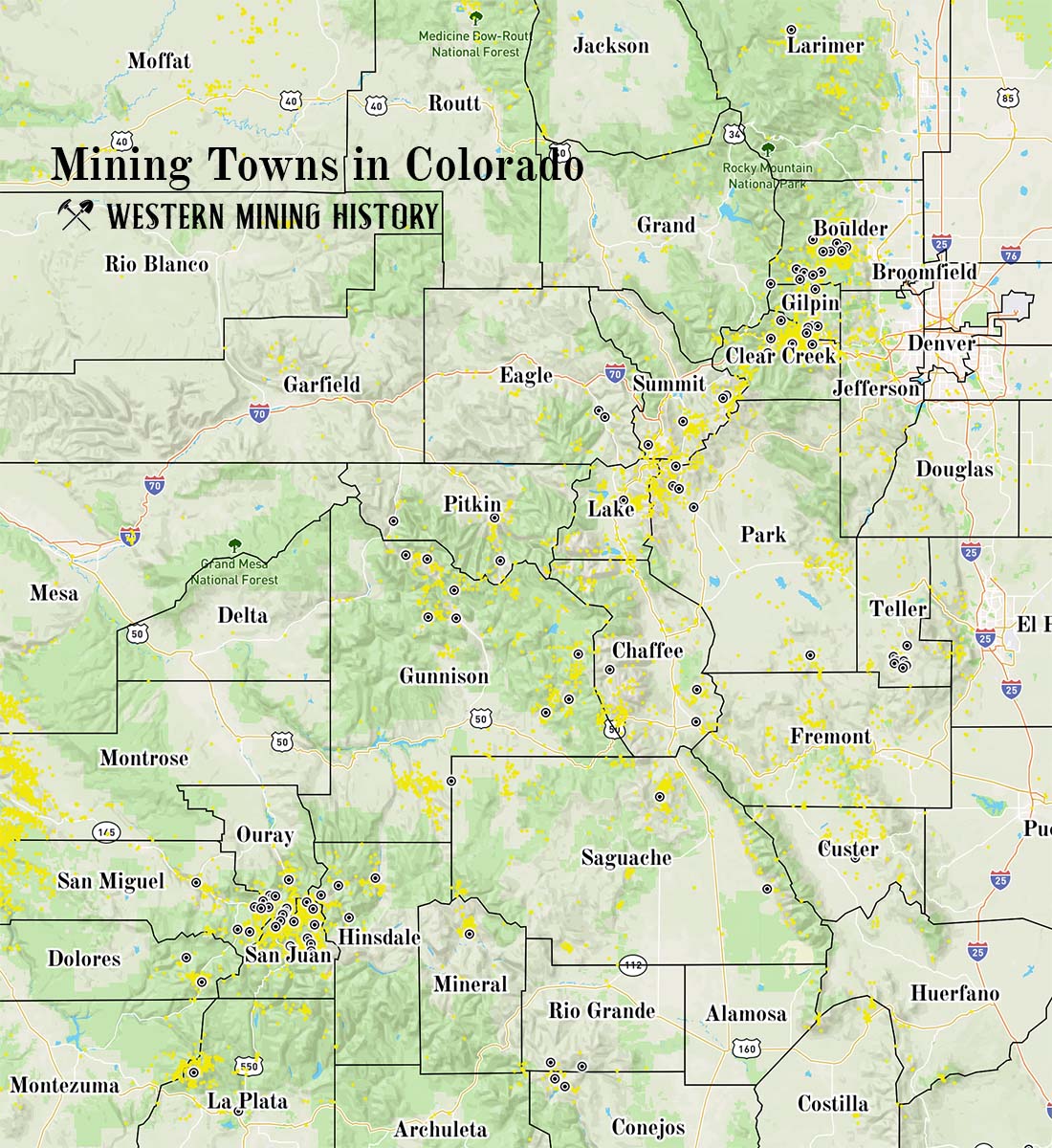
Explore over 100 Colorado mining towns: A tour of Colorado Mining Towns.
Colorado Mining Photos
More of Colorado's best historic mining photos: Incredible Photos of Colorado Mining Scenes.
